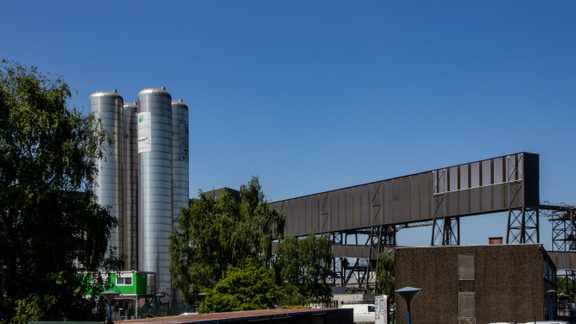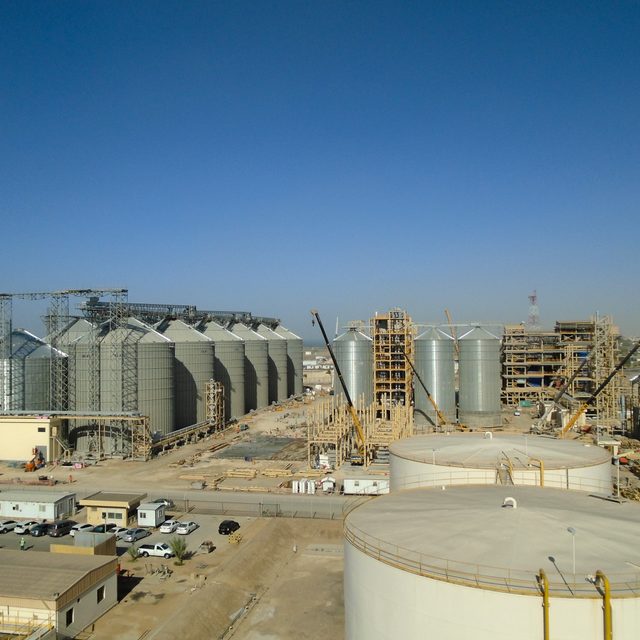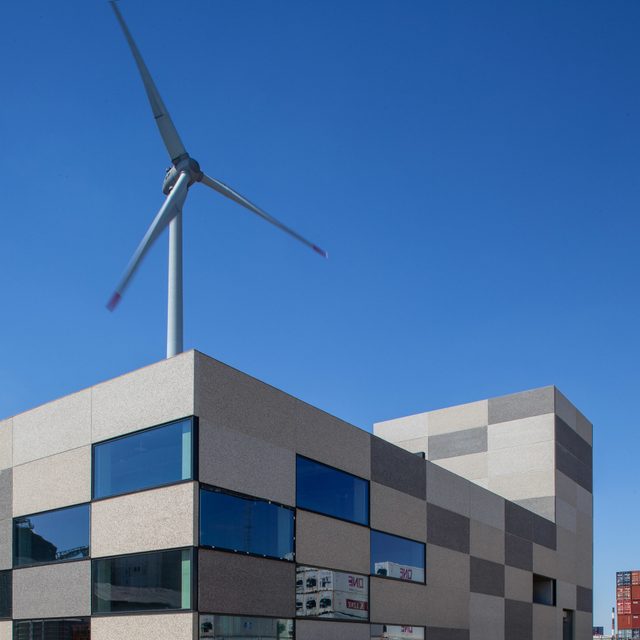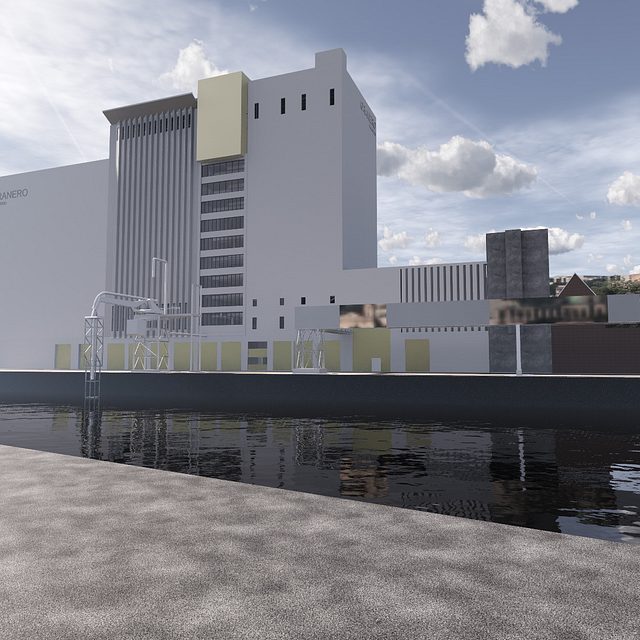Some years ago, VK realised for AlcoBioFuel a bio-ethanol production unit in the Ghent canal area. Following from that assignment, VK architects+engineers also designed and constructed a green CO2 production unit. During the bio-ethanol process, quite some CO2 is released, which this new unit recovers and commercializes. As such, AlcoBioFuel yearly recovers up to 100,000 tons of CO2, and the footprint of the bio-ethanol production is remarkably reduced.
In a first area, the CO2 is liquified in an enclosed, non-climatised building. This area also includes condensators, a CO-washer and stripping.
An extension of an existing pipe bridge transports the liquid CO2 to a second area where the CO2 is stocked in 4 vertical tanks. This area also has a prefab container building on an open steel structure with a lab, technical space, sanitary rooms and the driver's room. Because the CO2 is transferred from the tanks to tank trucks in the loading areas with 3 weighing bridges.
The liquified CO2 is used in the food industry, for water purification, cooling transports and as a chemical source.




